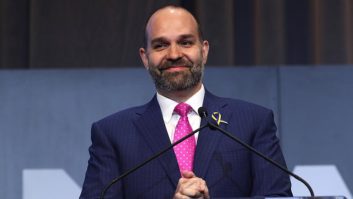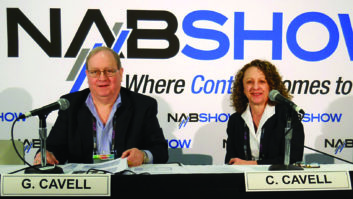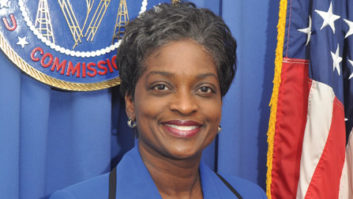In late March, further progress was made in incrementally easing some of the regulatory challenges faced by AM radio stations. This latest batch of new rules, which covers an array of mostly AM “moment method” proof-of-performance related issues, became effective with the publication of the adopted rule changes in the Federal Register.

The text and background for the changes can be found in the FCC’s Third Report and Order in MM Docket No. 13-249 (https://tinyurl.com/yb46glg9); I’ve summarized the changes for you at the end of this article.
Radio World readers know that these new rules are a continuation of the FCC’s AM revitalization efforts, which are intended to ensure their continued viability of the AM band. The First Report and Order in MB Docket No. 13-249 (https://tinyurl.com/ychdnwwz) started it all by opening the companion FM translator process, modifying principal community coverage requirements, eliminating the “ratchet rule,” easing the MDCL implementation process, and relaxing the AM antenna efficiency standards. With more AM-friendly rule changes likely in the future, it’s worth taking a moment and reviewing impact of the first R&O and the drivers for AM station relocation and the potential benefits and challenges of collocation.
As has been discussed in Radio World, the AM radio business model increasingly has become challenged by competing services, a rising noise floor and shrinking effective coverage reach. Meanwhile, the rug is almost literally being pulled out from under existing AM stations as rising real estate values and more lucrative land uses pressure these stations to either find a new transmitting location or go dark.
Developing a brand-new site is fraught with time- and cost-intensive processes such as local permitting, legal contracts, environmental concerns and other hurdles. Often the involved costs and timeframes far exceed the costs of on-site engineering, equipment and construction. As a result, station collocation at an existing AM antenna site is becoming the most attractive option.
The collocation of an AM station with “non-AM” towers, such as FM or TV towers, is often possible, but requires a bit of forethought and may not always be a practical option. Typically, these towers are not base-insulated, so a properly designed skirt wires system must be installed on the host tower to accommodate the AM operation. Depending upon the tower height and the involved AM frequency, some skirt systems can become complicated, and involve tuned and detuned (isolating) sections. Also, insulators will have to be installed in the existing guy wires, (for guyed towers), and a suitable ground system still has to be plowed in.
The often “simpler” option to consider is the use of existing AM transmission sites since much of the necessary infrastructure is already at hand. Of course, the existing tower heights and ground system radial lengths must be compatible — for instance, diplexing a 630 kHz station into a 1590 kHz station may not be feasible because of the big difference in wavelengths. On the other hand, the involved frequencies must not be too close either, due to practical filtering considerations.
A non-directional station can, of course, look at collocating at another non-directional station’s site. Or in the alternative, a non-directional station can share a tower at an existing directional site. This requires the de-tuning of unused towers at the host site in addition to the customary diplexing system filtering hardware and matching system.
A directional station seeking a host will look for another directional station since the necessarily larger acreage is already available at an existing directional site. Of course, you still need to evaluate existing towers at that site to assess whether the heights are compatible and the geometry (tower layout) can accommodate the design needed for your station’s pattern from this new vantage point. Sometimes you can add another tower or towers to an existing site to make things work — and quite often (from a local zoning standpoint) it can be easier to add towers to an existing site than to try to develop a new site from scratch. One caution — even if the tower heights and geometry seem to work, careful consideration has to be given to the involved filter circuits; some situations do not lend themselves to practical (or achievable) solutions.
Site selection and the business case go hand in hand, and the cost implications of collocation are numerous and sometimes complex. What lease terms are available? What replacements, repairs or upgrades will be needed at the site for successful collocation? Are there environmental issues that could become a shared responsibility? An experienced broadcast communications lawyer should be sought to answer these and other related questions.
In all these scenarios, the site location and geometry of the host tower array must meet the tenant’s purposes while still satisfying FCC-mandated (day, night and sometimes “critical hours”) protection of other stations. The site must also be able to provide the desired coverage into communities of interest as well as the station’s city of license. Fortunately, aspects of the FCC’s signal protection requirements and, to a greater extent, principal community coverage requirements and antenna efficiency have been revised under the FCC’s First R&O, providing greater flexibility for site relocations. Other potentially more significant rule changes remain under consideration in the FCC’s “Further Notice.”
RELAXED RULES FOR AM PROOFS
Skipping back to this article’s beginning topic — the Third Report and Order’s rule changes — the FCC relaxed the partial proof rules for conventionally proofed antenna systems by reducing the number of measurement radials required. You need to only measure eight points on each radial that includes a monitor point.
For arrays proofed with Method-of-Moments technique, the FCC eliminated the biannual sample system recertification requirement. (Recertification is only needed when sample system equipment has been repaired or replaced.) They also clarified the base region model shunt capacitance assumptions that can be used in a MoM proof, eliminated the need for a surveyor’s certification when an existing AM array’s towers are involved for a new station or design (as long as no new towers are added or the existing geometry changed), and deleted the requirement to take new reference point measurements when the same array and pattern is being relicensed.
“Stay tuned” — more changes are likely and warrant our attention and comment as they are being considered.
Gary Cavell is president of Cavell, Mertz & Associates and a past president of the IEEE Broadcast Technology Society.







